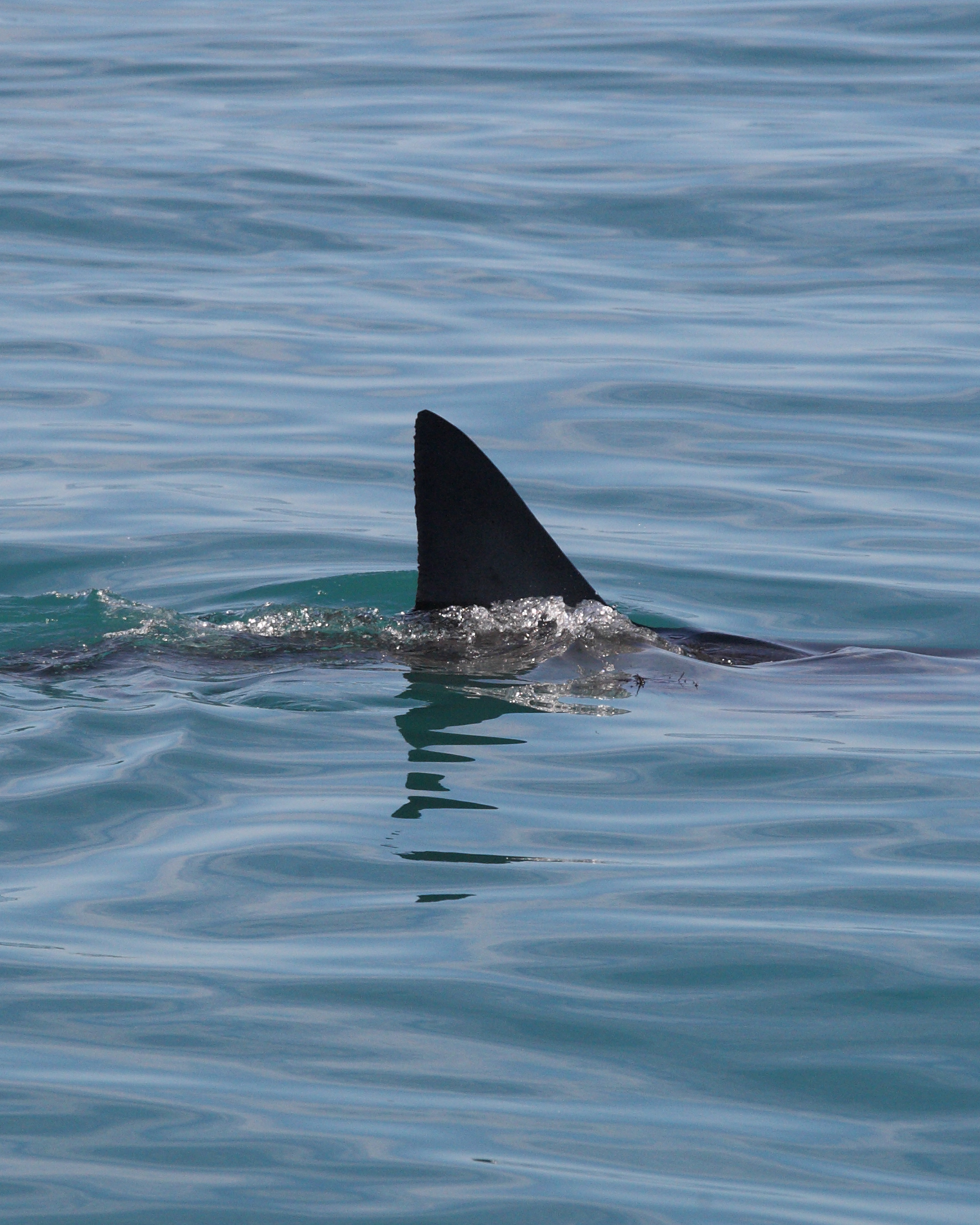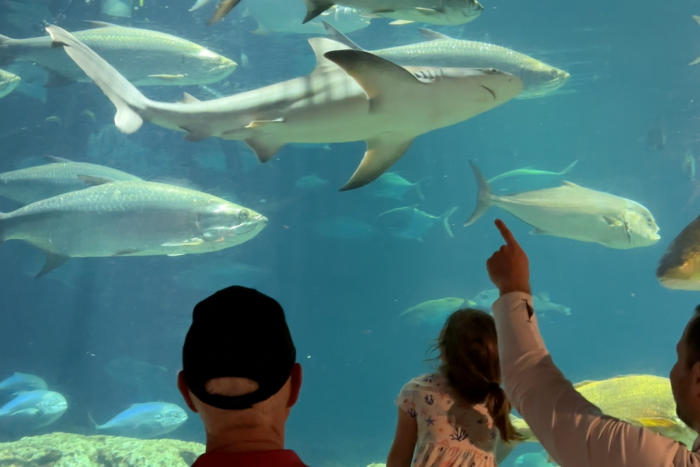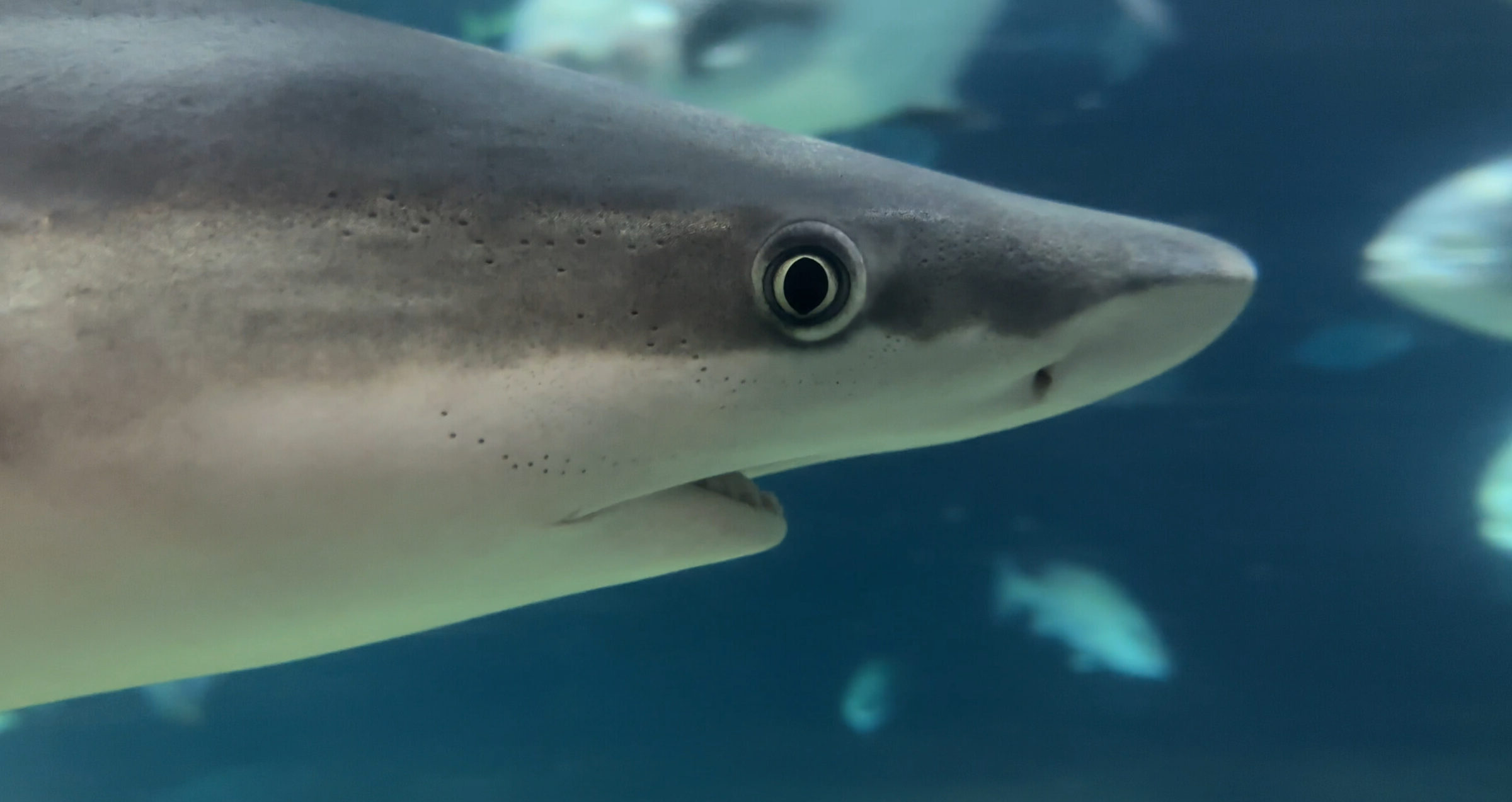It’s Shark Week, and we’re tackling some myths about these creatures of the deep! Sharks are often misunderstood and feared, which can lead to unnecessary harm to their species (and a few more nerves on the water for us). Let’s take a bite out of some of these misconceptions so we can be well-informed conservationists of these apex predators!
Da Dun… Da Dun… Da Dolphin?
Question: When I see a fin poking through the ocean’s surface, I should assume it’s a shark and keep my distance, right?
Answer: You’re partly correct! While it’s definitely possible to see a shark dorsal fin in the water, the fin you see may actually be a dolphin, and there are a couple of ways to tell the difference. Sharks typically have a more triangular-shaped dorsal fin with a straight outline, while dolphins have a dorsal fin with a slight curve. Another way to tell is by observing the movement pattern of the fin. Does it look as if it’s “coasting” along the water’s surface? Then it’s likely a shark, which swim in side-to-side patterns! If the fin disappears and reappears, it’s likely a dolphin, swimming in an up-and-down pattern.
 Shark dorsal fins have a straight, almost triangular shape.
Shark dorsal fins have a straight, almost triangular shape.No matter what finned friend you spot, keep plenty of distance between you two! This is for both you and the animal’s safety. In fact, it’s illegal come within 50 yards of a wild dolphin, or any marine mammal for that matter. Bring a pair of binoculars (or a camera with a trusty zoom lens) on your next ocean adventure to enjoy wildlife from afar!
Close Encounters of the Cartilaginous Kind
Question: Sharks are getting closer and closer to humans in our waters, aren’t they?
Answer: Well, that’s sort of true. Rising ocean temperatures due to climate change may be shifting some species’ migration patterns further north. A research study showed for every 1 degree Celsius (or 1.8 degrees Fahrenheit) the ocean temperature rises, tiger sharks typically migrate 250 miles further north.
 Sandbar sharks are one of the species seen off the Carolina coast.
Sandbar sharks are one of the species seen off the Carolina coast.Though every time we hear about a shark spotting it may seem like sharks are closer to us than ever before, they’ve actually always been our neighbors in the surf! Whether you see them or not, you’re likely sharing your saltwater swim with some sensational sharks. We’re constantly learning more and more about these incredible creatures from scientists and organizations spanning the globe. From studying migratory patterns and behavioral shifts to understanding human-induced impacts on their populations and educating the public on these findings, organizations are helping people lean to marvel at the magnificence of sharks rather than falling back on fear.
Deadliest… Wait, There’s a Catch!
Question: Sharks are definitely near the top of the list of deadliest animals to humans, right?
Answer: Actually, not at all! If you think about how sharks are portrayed in media and pop culture, it’s easy to assume that they are one of the deadliest species to humans, but that’s just not true. In fact, statistics show that sharks aren’t even in the top 15 species when it comes to human danger. If you’re wondering who the culprits on that list actually are, that’d be mosquitos, snakes, dogs and even hippopotamuses!
While it’s true that sharks can cause major damage, they aren’t the monsters we’re often made to believe. Check for any safety notices posted at the beach you’re visiting, and remember to remain aware of your underwater surroundings while you make a splash!
Give ‘Em SomeFIN To Talk About
Question: If sharks are already an apex predator in the food web, why are they a focus of conservation efforts?
Answer: Regardless of where sharks are in the marine food web (or any animal, for that matter!), all species are worthy of protection because they all play a part in maintaining a balanced ocean. Even though sharks are apex predators, that doesn’t mean they are invincible to threats!
 Shark conservation is vital to maintaining a balanced ocean.
Shark conservation is vital to maintaining a balanced ocean.Shark populations around the globe face the impacts of climate change, overfishing, human interaction, habitat disruption, plastic pollution and a myriad of other threats. All of these threats can set off a chain reaction, the impacts of which are deeper than you may realize. Less sharks in the ocean can lead to an imbalance in the marine food web, made up of organisms that all play a vital role in sustaining a balanced ocean. It’s all connected… What impacts sharks could impact plenty of other marine creatures, too.
Sink Your Teeth Into Solutions
Between misconceptions and global threats, the outlook for sharks might seem gloomy, but things can turn around! What can we do to help?
- Continue to learn more about these amazing creatures by visiting an aquarium accredited by the Association of Zoos and Aquariums (AZA), like us!
- Support organizations that are committed to taking action in shark conservation through research and sustainable fishing practices.
- Show respect to our neighbors in the big blue by keeping a safe distance and ensuring litter doesn’t end up in their home.
Learn more about sharks, and how you can take action to protect them, with a visit to the Aquarium!
Published July 11, 2023


